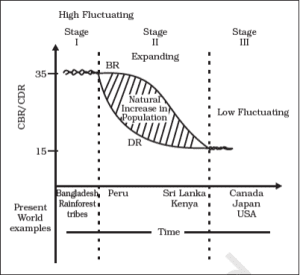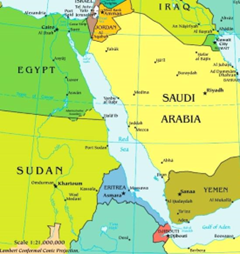WSDP Bulletin (04/04/2024)
(Newspapers, PIB and other important sources)
Prelim and Main
1. India to Build First Commercial Crude Oil Strategic Storage READ MORE
2. Holograms, blockchain tech can curb counterfeit drugs, says Mankind Pharma CEO READ MORE
3. Why Uttarakhand govt wants to evaluate the risk of Glacial Lake Outburst Floods READ MORE
4. Massive earthquake hits Taiwan: What is the Ring of Fire? READ MORE
5. The US and the UK sign agreement on AI safety testing: What is the deal? READ MORE
6. Unintended consequences: Street vendors in India struggle amid the single-use plastic ban READ MORE
7. Lack of scientific debate and involvement of all stakeholders will not help Project Tiger succeed READ MORE
8. Communities in Chhattisgarh & Uttar Pradesh are using tech, on-ground monitoring to reduce human-elephant conflicts READ MORE
Main
GS Paper- 1
1. Impact and dualities of Social Media READ MORE
2. Afforestation norms: Irregularities call for remedial action READ MORE
3. The rise of ‘water aunties’ and sustainable solutions READ MORE
GS Paper- 2
POLITY AND GOVERNANCE
1. Political consensus key to simultaneous polls READ MORE
2. Balance between demographic concerns and human rights READ MORE
3. EVMs must be above suspicion READ MORE
4. Courts can’t allow process of PMLA to be punishment READ MORE
5. Global rights body must hold NHRC accountable for its silence on key human rights issues in India READ MORE
6. Bureaucratic Business READ MORE
SOCIAL ISSUES
1. Inequalities in the global health dialogue READ MORE\
INTERNATIONAL ISSUES
1. The escalating perils of global terrorism READ MORE
GS Paper- 3
ECONOMIC DEVELOPMENT
1. Should State Governments borrow more? | Explained READ MORE
2. Turning the spotlight on the urban poor READ MORE
3. Fiscal battle: On borrowings and Kerala’s suit READ MORE
4. Reducing inequalities the key to making India prosperous READ MORE
5. India’s employment dilemma READ MORE
6. Nurturing Cooperation in the Critical Minerals Supply Chains READ MORE
ENVIRONMENT AND ECOLOGY
1. How Odisha is promoting climate-resilient agriculture through rice fallow initiative READ MORE
2. By financing environmentally damaging projects, can Indian funders be held liable? READ MORE
SCIENCE AND TECHNOLOGY
1. Systems science for a better future READ MORE
2. Synergy between man and machine READ MORE
INTERNAL SECURITY
1. Sela Tunnel: India’s Border Infrastructure Push Makes Progress READ MORE
DISASTER MANAGEMENT
1. Mitigating risks in infrastructure development READ MORE
GS Paper- 4
ETHICS EXAMPLES AND CASE STUDY
1. Adhere to dharma and Satya READ MORE
2. Role of parents in a child’s formative years READ MORE
3. TIME TO Root out corruption READ MORE
Questions for the MAIN exam
1. As terrorism continues to pose a global threat, collaborative efforts among nations are essential. In this endeavour, the US and India can play pivotal roles, leveraging their resources and expertise in the fight against terrorism. Comment.
2. A citizenship regime should be designed to accommodate the nuances of individual situations, fostering an environment where no one is left in the shadows of statelessness. Comment on the statement in the light of recent enacted Citizen Act.
3. The digital revolution opens new avenues for women’s economic participation, however, to ensure true inclusion, this revolution must be steered by gender-sensitive policies. Comment.
4. The US-India Great Power Partnership enjoys strong tailwinds, but its success is not inevitable. The relationship requires a considered understanding of the cultural, demographic, and political drivers at work in the two complex democracies. Critically analyse.
5. Investing in a green resilient and knowledge-based economy is crucial for sustainable economic development of the State. Comment.
QUOTATIONS AND CAPTIONS
- We have to choose between a global market driven by calculations of short-term profit, and one which has a human face.
- An analysis of income and employment trends of slum dwellers points to the prospects of economic mobility and decent work for the poor in urban India.
- The coexistence of higher unemployment and wages requires further investigation to understand its implications for the urban poor.
- Rather than specialised sciences focused on parts, a higher-level science is required — one of holistic, self-adaptive systems.
- Women’s contributions to the well-being of families and societies are under-valued in money terms and not counted in GDP.
- The various advantages of “one nation, one election” such as focused governance, continuity in policy decisions, and improved State finances are well accepted.
- Dharma and Satya have profound implications on our actions and beliefs.
- A Digital Platform is now tested across states, and hundreds of systems are now export-ready on parameters that include physical and training components and Information Education and Communication campaigns to train at the grassroots level where semi-skilled operators.
- Addressing the multifaceted challenges posed by terrorism demands a nuanced approach that differentiates between law and order issues and acts of terrorism.
- As terrorism continues to pose a global threat, collaborative efforts among nations are essential. In this endeavour, the US and India can play pivotal roles, leveraging their resources and expertise in the fight against terrorism.
- Ambient computing represents a transformative concept that are propelling Industry 4.0 towards the realisation of smarter factories.
- While acknowledging the concerns raised by various sections of society, it is essential to emphasise the importance of striking a balance between demographic considerations and human rights.
- A citizenship regime should be designed to accommodate the nuances of individual situations, fostering an environment where no one is left in the shadows of statelessness.
- While the WHO must remain a key coordinating agency, all actors engaged in public health must commit to global health equity in word and deed.
- The National Education Policy 2020 could be oriented towards enhancing employability, focusing on skill intensity, fostering collaboration with employers, and promoting experiential learning.
- Banks and financial institutions in India have no internal mechanisms to address the broader costs of investing in risky projects.
- India’s border connectivity push is likely to stay strong given that both India and China have an ongoing confrontation at the border and there have been no signs of easing of tensions.
ESSAY TOPIC
- Mutual tolerance is a necessity for all time and for all races.
50-WORD TALK
- Supreme Court has rightly refused to accept Ramdev’s apology on misleading ads. Patanjali must recognise this isn’t about plugging its FMCG empire, but about selling snake oil, folk medicine as cures. The court has called Patanjali to account to end the promotion of quackery in the name of ancient knowledge.
- A fresh political battlefront over the role of the judiciary is bizarre. It shows that instead of protecting the judiciary, there is an attempt to intimidate one of the pillars of democracy. The nation’s faith endures in a judiciary that remains committed to the Constitution, far away from political whims.
Things to Remember:
- For prelims-related news try to understand the context of the news and relate with its concepts so that it will be easier for you to answer (or eliminate) from given options.
- Whenever any international place will be in news, you should do map work (marking those areas in maps and exploring other geographical locations nearby including mountains, rivers, etc. same applies to the national places.)
- For economy-related news (banking, agriculture, etc.) you should focus on terms and how these are related to various economic aspects, for example, if inflation has been mentioned, try to relate with prevailing price rises, shortage of essential supplies, banking rates, etc.
- For main exam-related topics, you should focus on the various dimensions of the given topic, the most important topics which occur frequently and are important from the mains point of view will be covered in ED.
- Try to use the given content in your answer. Regular use of this content will bring more enrichment to your writing.

